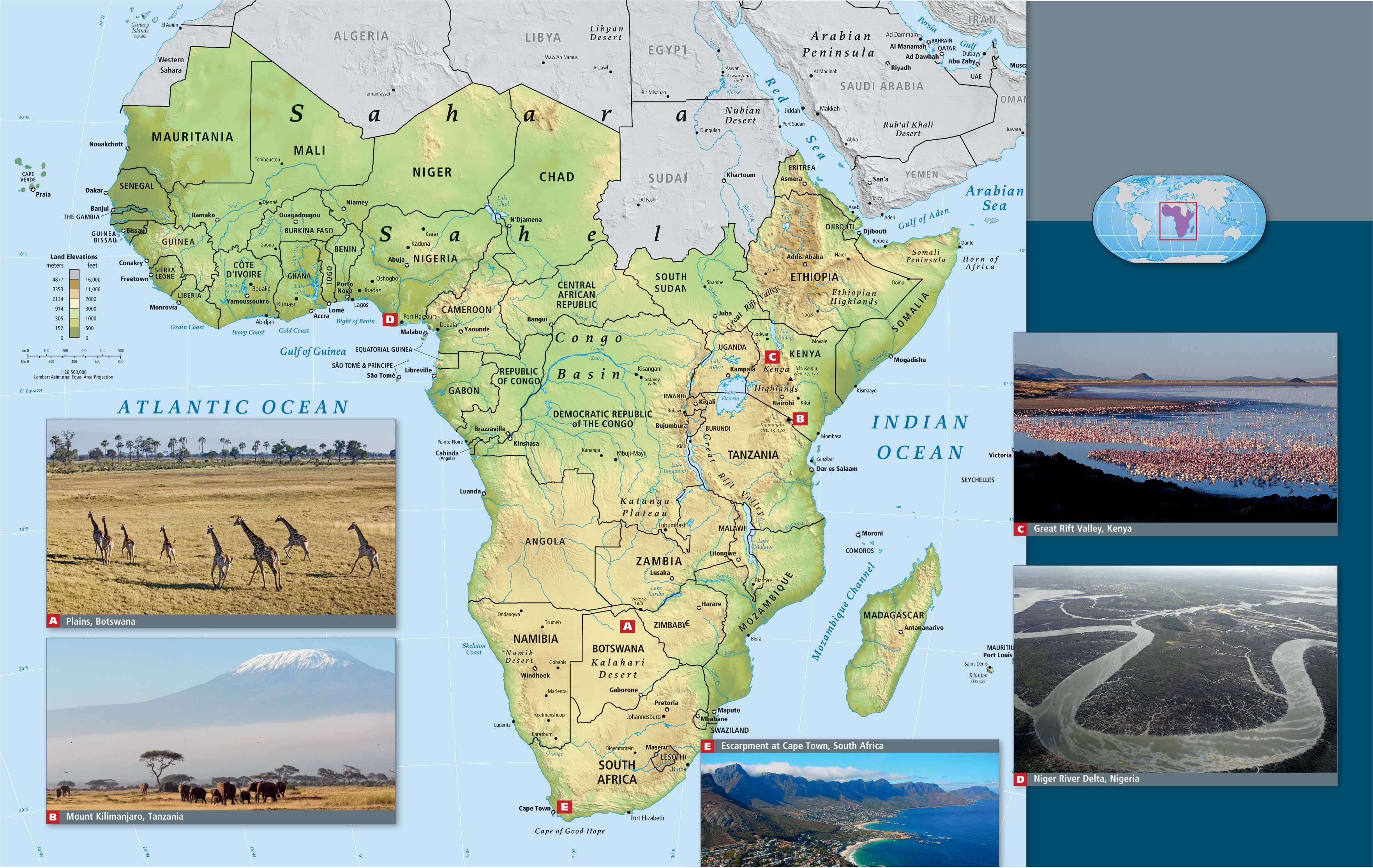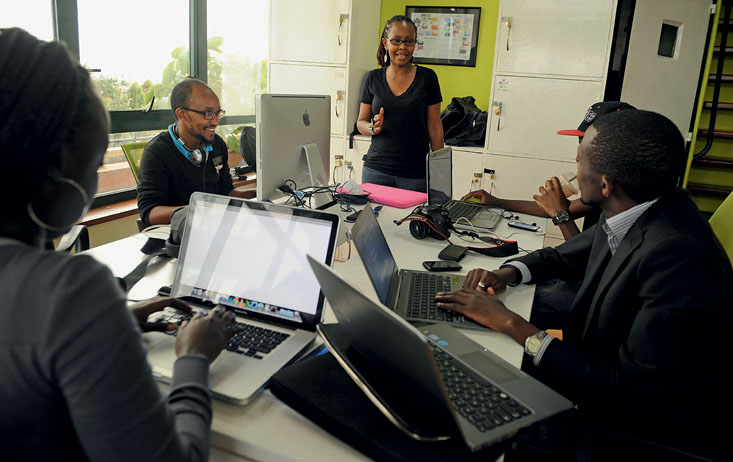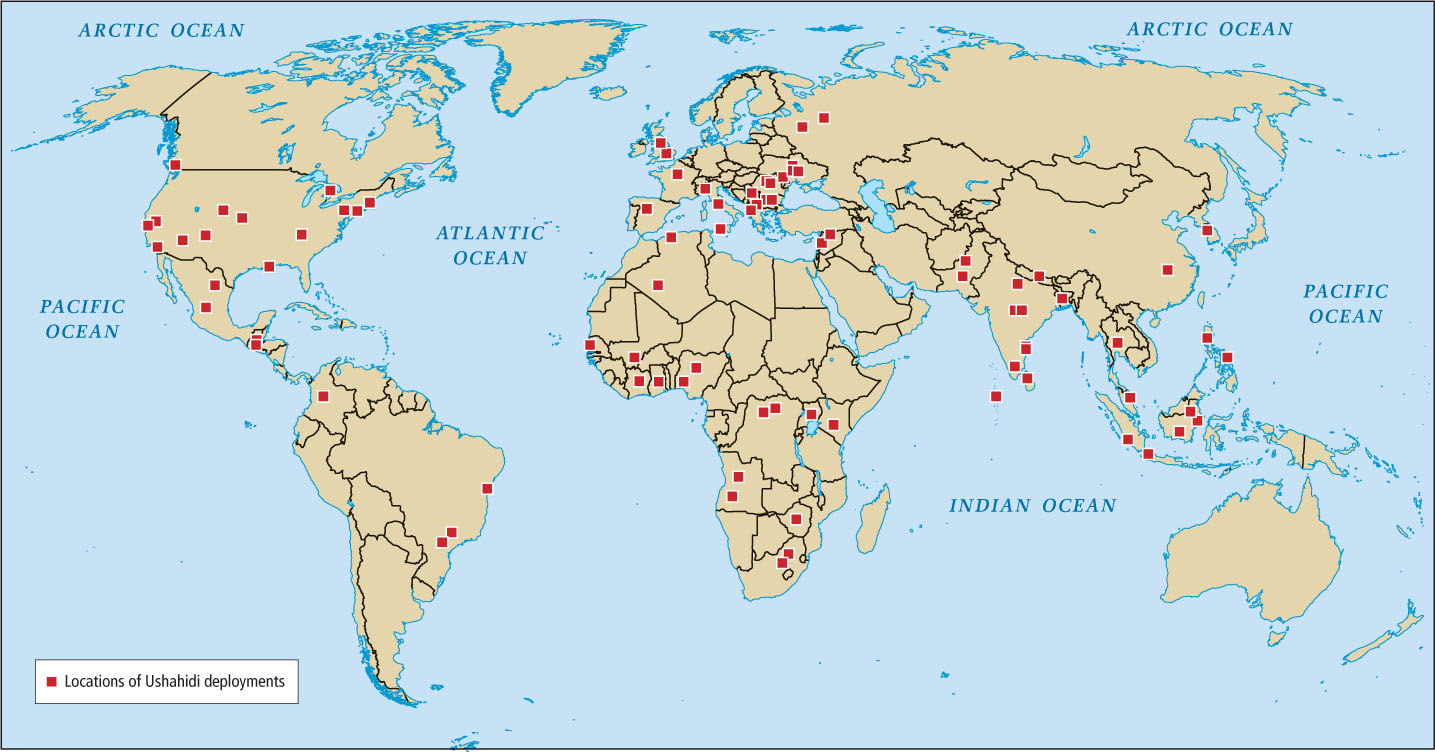7.1 7 Sub-Saharan Africa

7.1.1 Geographic Insights: Sub-Saharan Africa
Geographic Insights: Sub-Saharan Africa
After you read this chapter, you will be able to discuss the following geographic insights as they relate to the nine thematic concepts:
1. Climate Change, Food, and Water: Sub-Saharan Africa is particularly vulnerable to climate change because subsistence occupations are sensitive to even slight variations in temperature, rainfall, and water availability. In large part because of poverty, political instability, and having little access to cash, the region does not have much resilience to the effects of climate change.
2. Globalization and Development: During the era of colonialism, Europeans set up the pattern that continues to this day of basing the economies of sub-Saharan Africa on the export of raw materials. This leaves countries vulnerable in the global economy, where prices for raw materials can vary widely year to year. While a few countries are diversifying and industrializing, most still sell raw materials and all rely on expensive imports of food, consumer products, and construction and transportation equipment.
3. Power and Politics: Countries in the region are shifting from authoritarianism to elections and other democratic institutions, but the power structures in the region are resistant to democratization. While free and fair elections have brought about dramatic changes, distrusted elections have often been followed by surges of violence.
4. Gender, Power, and Politics: The education of African women and their economic and political empowerment are now recognized as essential to development. As girls’ education levels rise, population growth rates fall; as the number of female political leaders increases, so does their influence on policies designed to reduce poverty.
5. Population, Urbanization, Food, and Water: In part because of lower infant mortality rates and the higher cost of rearing children in cities, urbanization has the positive effect of encouraging families to limit births. Nevertheless, urbanization often happens in an uncontrolled fashion, leaving many people to reside in impoverished slums without adequate services, sufficient food, and clean water.
The Sub-Saharan Region
Sub-Saharan Africa (see Figure 7.1) contains 48 countries and occupies a space bigger than North America and Europe combined. Contrary to popular opinion, it is not as yet particularly densely populated. This region is the ancient home of modern humans; it has megafauna that most of us will see only in zoos and an amazing variety of landscapes. But it is not a region that is well known to most and is often erroneously thought of as desperately poverty stricken and barely capable of helping itself. This chapter is intended to show a more objective, accurate picture of sub-Saharan Africa.
The nine thematic concepts in this book are explored as they arise in the discussion of regional issues, with interactions between two or more themes featured, as in the geographical insights on this page. Vignettes, like the one that follows, illustrate one or more of the themes as they are experienced in individual lives.
GLOBAL PATTERNS, LOCAL LIVES
Few people in the East African country of Kenya have computers, but nine of ten Kenyans have mobile phones! They use these simple and inexpensive devices (not smart phones), with texting (SMS) capabilities and perhaps a camera for a multitude of tasks that in Europe or North America are done on computers. One of the most consequential tasks is mobile banking—sending and receiving money via mobile phone. More than 20 percent of the Kenyan gross domestic product (GDP) flows through the mobile banking system. This means that the smallest businessperson can order materials and pay bills and employees without having to pay for expensive equipment and accounting systems or making an expensive time-consuming trip to a bank in a distant city. Small farmers with crops to sell can use SMS to find out where the best market is at the moment and can maximize their profits by bypassing the middlemen who charge high fees.
Juliana Rotich (Figure 7.2) grew up in a small town in Kenya, just as Africa was first experiencing the mobile phone and the Internet revolutions in communication. She won admittance to a U.S. university, where she became an IT major. She then collaborated with friends in the online community to found and run Ushahidi, a web-based, open source reporting system with interactive mapping capabilities. Now widely used throughout the world, Ushahidi, which means “testimony” in Swahili, was originally designed for quickly sharing information about the violence that broke out in Kenya during the 2008 elections. A user can connect to Ushahidi through a phone or a Web site to instantly learn specific details about a situation. Information gathered from hundreds or even thousands of users (called crowdsourcing) can be verified, mapped, and disseminated in real time.

Who benefits most when barriers to the use of technology are lowered and suddenly virtually everyone has a mobile phone? The businesspeople and farmers of Kenya have clearly been beneficiaries; but with its mapping capabilities, the Ushahidi application has also been used to help rescuers locate people buried by earthquakes in Haiti, Chile, and Japan. Ushahidi enabled crucial communication between dissidents during and after the Arab Spring revolutions in Libya and Egypt; it was used by Syrians protesting against the Assad government, and then during the Syrian civil war (Figure 7.3).

Some of the most exciting innovations that Ushahidi makes possible for Africans are those in disease control, health care, political reform, wildlife inventorying, and the control of corruption. Ushahidi increases transparency and helps people share their stories. [Source: “99 Faces.” For detailed source information, see Text Credit pages.] 
Modern sub-Saharan Africa (see Figure 7.1) has many success stories to tell. The tendency outsiders have of perpetuating the image of Africa as a place of disease, corruption, conflict, and poverty is now aggressively counteracted by assertive, highly competent women and men, such as Juliana Rotich, who use the powerful language of opportunity, optimism, and innovation to characterize the Africa they know today. In 2012, six of the ten fastest-growing economies in the world were in sub-Saharan Africa. World Bank studies (2010) indicate that some countries, such as Congo (Brazzaville), with some of the world’s richest deposits of oil, gold, platinum, copper, and other strategic minerals, are taking control of mineral exploitation and using the profits to reduce poverty.
During the era of European colonialism (1850s-1950s), sub-Saharan Africa’s massive wealth of human talent and natural resources flowed out of Africa. Even after African countries became politically independent in the 1950s, 1960s, and 1970s, wealth continued to flow out of Africa. Now, increasingly, wealth is being created in Africa for Africans. While much of the region is impoverished and parts are in armed conflict, there are many hopeful signs that corruption and discord will be alleviated and well-being significantly enhanced.
THINGS TO REMEMBER
 The many stereotypes of sub-Saharan Africa—that it is a region of conflict, disease, corruption, and poverty—are being countered by young, educated Africans who are constructing new public agencies and private businesses in their home countries, often grounded in modern technology.
The many stereotypes of sub-Saharan Africa—that it is a region of conflict, disease, corruption, and poverty—are being countered by young, educated Africans who are constructing new public agencies and private businesses in their home countries, often grounded in modern technology. Africans are not only affecting their own countries, they are revising Africa’s position vis-à-vis the rest of the world by devising innovative solutions that can be used in many situations.
Africans are not only affecting their own countries, they are revising Africa’s position vis-à-vis the rest of the world by devising innovative solutions that can be used in many situations. Some sub-Saharan countries now have economies that are among the fastest-growing in the world.
Some sub-Saharan countries now have economies that are among the fastest-growing in the world.